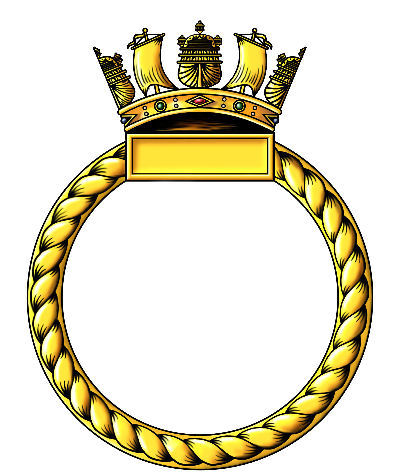S-Class Submarine

No badge issued for this vessel
Battle Honours
Arctic 1942-43
Atlantic 1944
Specifications
Builder: Cammell Laird Shipyard, Birkenhead, United Kingdom
Displacement: 814 tons
Length: 217 ft
Beam: 23 ft 8 in
Draught: 11 ft
Propulsion: 2 × 950 bhp (708 kW) diesel engines, 2 × 650 hp (485 kW) electric motors driving two propellers
Speed: 14.75 knots (16.97 mph; 27.32 km/h) surfaced. 9 knots (10 mph; 17 km/h) submerged
Range: 7,500 Nautical miles surfaced (8,600 mi; 13,900 km) at 10 knots (12 mph; 19 km/h) 120 Nautical miles submerged ( 140 mi; 220 km) at 3 knots (3.5 mph; 5.6 km/h)
Armament: 6 × bow & 1 stern 21 in (533 mm) torpedo tubes – carried 13 torpedoes or 12 mines; 1 × three-inch (76 mm) gun (QF 4-inch deck gun; 1 × 20 mm Oerlikon AA gun; 3 × .303 calibre machine guns
Crew complement: 48
Commanding Officers
Lt. Anthony Robert Daniell, DSC, RN Aug 1942
Lt. Desmond Samuel Royce Martin, RN 4 Dec 1942
Lt. Kenneth Steele Renshaw, DSC, RNR 18 Mar 1943
Lt. Clifford Raymond Pelly, RN 23 Mar 1943
Lt. Samuel Stanley Brooks, DSC, RN Feb 1944 - 30 Jul 44
Lt. Edward Ashley Hobson, DSC, Aug 1944 - Nov 1945
Related items
None
Reminiscences
None
Gallery
None
H.M. S/M SEADOG
PAGE UNDER CONSTRUCTION
Read aloud

Image copyright IWM (FL 3932)
Early history
P216 was ordered from Cammell Laird Shipyard, Birkenhead on April 4thth 1940, one of the batch two boats ordered as part of the third group of S class submarines for the Royal Navy. Her keel was laid down on December 31st 1940. She was launched on June 11th 1942.
On completion of her builder’s trials she departed for Holy Loch on September 22nd to begin a period of trials and training, she was escorted by the ASW Trawler HMS BUTSER arriving three the next day. morning of the 24th she conducted full power trials on the Arran measured mile. On arrival back in Holy Loch she commissioned as H.M. Submarine P216 (SEADOG) under the command of Lieutenant A.R. Daniell, DSC, RN.
While at Holy Loch she conducted Torpedo, Gunnery, Bombardment, D/F and RDF exercises and performed simulated day and night attacks, both submerged and surface actions. She also performed trials at the torpedo firing range at Arrochar. Local vessels acted as targets; conducted night attack exercises with HMS GRAPH (ex-German submarine U-570) on October 1st and further night exercises in the Clyde area with the Dutch submarine HNMS DOLFIJN on the 30th
HMS P216 departed Holy Loch for Lerwick on November 5th from which she would sail for her first war patrol, as part of her work up. She took passage with the Submarines with HMS P312 (TRESPASSER) and TROOPER escorted by the minesweeper HMS La CAPRICIEUSE. On the 6th while still on passage urgent new orders arrived; P216 and P312 were to set course immediately for their patrol areas off the Norwegian coast in response to intelligence that a German 'heavy unit' was thought to be on the move from Norway to the Baltic. Despite both boats being allocated new patrol areas on the 11th no vessels were sighted. P216 arrived at Lerwick on the 30th, ending her first war [patrol, P312 had arrived the day before. Both Submarines departed Lerwick for Holy Loch later on the 3oth escorted by the ASW Trawler HMS SCALBY WYKE until 1300 on the December 1st when the ASW Trawler HMS FOXTROT took over the escort. They arrived at Holy Loch on the 2nd.
She was to make 11 more war patrols from the UK before she was reallocated for service in the Far East.
Allocated to the Eastern Fleet
H.M. Submarine SEADOG departed the Clyde for Gibraltar on first leg of her passage to the Far East; she took pottage with in convoy OS.97 / KMS.77. From Gibraltar she sailed to Malta, Port Said, and Aden arriving at Trincomalee, Ceylon on January 17th 1945. Here she joined the 2nd Submarine Flotilla attached to the depot ship HMS WOLFE. She began her 13th war patrol, her 1st in the East Indies on the 17th operating off the Andaman Islands in the Bay of Bengal.
&SEADOG completed three more war patrols operating off and the West coast of Siam, the Andaman Islands and Northern Sumatra and the in the Malacca Strait. She ended her 16th war patrol (4th in the East Indies) at Trincomalee on August 12th. She was in Trincomalee harbour when the Japanese surrender was announced on the 15th.
Return to the UK and disposal
Now surplus to requirements SEADOG was to return to the UK to be placed in the reserve; she sailed from Trincomalee for Port Suez on September 6th. After calling at Port Suez, Port Said, Alexandria, Malta and Gibraltar she arrived at Portsmouth on October 18th. Eleven days later she departed Portsmouth for Harwich, on arriving there on October 30th she was transferred to the Reserve Fleet.
She put up for disposal and sold for scrap on December 24th 1947. She was broken up at Troon, Scotland in August 1948.
Last modified: 23 February 2023
Primary information sources
Additional sources:
uboat.net entry for H.M. Submarine SEADOG
Comments (0)